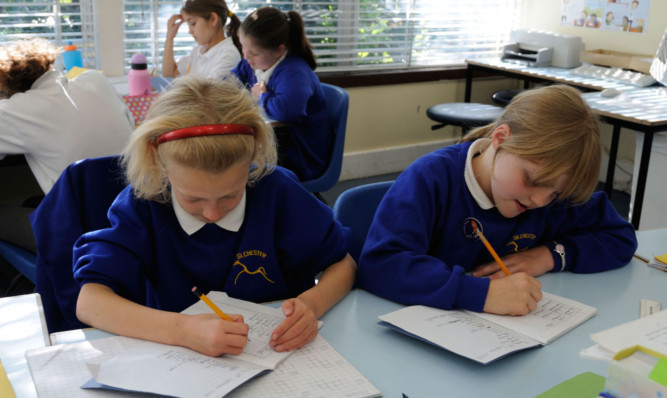
Pupils in the north of England face having their education compromised by schools saddled with debt, it has been claimed.
A Sunday Post probe has revealed a greater proportion of schools in the north of England are in the red than anywhere else in the country.
Critics fear schools struggling to balance the books may be forced to lay off teachers, increase class sizes or slash resources.
But last night Government education bosses said they ensured all schools had the resources they needed.
Chris McGovern, chairman of the Campaign for Real Education, said: “The main part of the school’s costs is of course staffing and that is where it will be hit if schools are in debt. It could mean children that need learning support and one-to-one help are most likely to suffer.”
During 2013/14, three of the four English regions with the highest proportion of local authority-run schools in debt were in the north of England.
In Yorkshire and the Humber, 7.5% of its local authority maintained schools were running a deficit.
Second highest was the south west where 7% were in debt but the top four was completed with the North West, where 6.9% of schools were in the red, and the North East where 6.4% were in debt.
By contrast, in the east of England just 2.6% of schools were struggling to make ends meet, which was the lowest in England.
Mr McGovern added: “There should not be a discrepancy between local authorities and there should not be a discrepancy between north and south, unless that discrepancy is made public.
“Local authorities need to be much more transparent with regard to their financial management of the schools.”
Meanwhile, pupils within the north face a shocking postcode lottery over their chances of going to a school struggling to stay afloat.
Our analysis, which does not include independent academies, has revealed in some council areas as many as one in five schools is in debt, while in neighbouring areas just a fraction are struggling.
In the north east, 15.9% of schools in Northumberland are in debt but in Middlesbrough it is just 2.2% and in Durham it is 2.3%.
In the north west, Cumbria has the highest proportion of schools running a deficit with 18.9% but neighbouring Lancashire has just 4.3% in the red and four councils in the region didn’t have any in debt.
Meanwhile, in Yorkshire and the Humber, Kingston upon Hull had a massive 21.6% of its schools in debt and North Lincolnshire had 18.3% of its schools in the red, whereas Bradford has one school, equivalent to 0.5% in the red.
The revelations come after analysis by the Association of School and College Leaders claimed the poorest-funded schools would receive £1.9 million less than the best-funded this year.
General secretary Malcolm Trobe said: “School funding is a postcode lottery. Schools receive inadequate funding because of a historic grant system that does not work.”
A Department for Education spokesman said they were “ensuring schools are funded fairly so all pupils, whatever their background and wherever they live have access to a good education”.

Enjoy the convenience of having The Sunday Post delivered as a digital ePaper straight to your smartphone, tablet or computer.
Subscribe for only £5.49 a month and enjoy all the benefits of the printed paper as a digital replica.
Subscribe